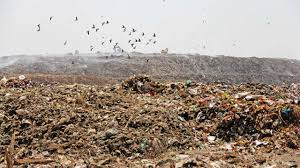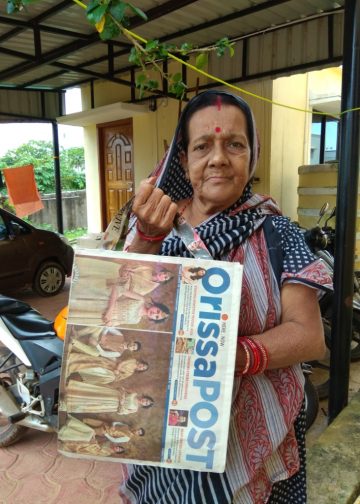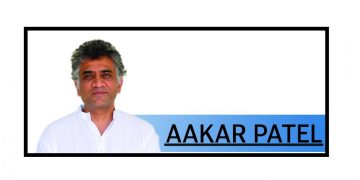Gandhinagar: Myths multiply while reality is a reluctant racehorse. The same stands true for the Gujarat model of development which is the national role model in Narendra Modi-ruled India.
Hyped perpetually by a high voltage media blitz, gullible products of ‘Whatsapp’ have led to the belief that Gujarat was ‘born’ the day Modi took charge as Chief Minister October 7, 2001 and developed magically over the next 4,610 days until a buoyed nation asked him to relinquish charge May 22, 2014 to lead the country. A reality check, based purely on facts, of his rule of the state would be in order. Though Prime Minister Modi is the present messiah of the Swachh Bharat movement, interestingly, it was Mahatma Gandhi who had launched the biggest sanitation drive in the history of Ahmedabad in 1919, cleaning almost 3,000 tonnes of garbage. Thirteen plus years of Modi’s helmsmanship and five years of his own party’s successors later, Gujarat accounts for three of the country’s most polluted rivers and Pirana in Ahmedabad is one of the most toxic garbage dumps in the world.
Spread over 84 hectares, this dumping yard of 1982, today constitutes three massive 75-feet-high mounds of garbage, each weighing 69 lakh metric tonnes. Highly toxic, spewing methane and carbon dioxide, it requires 48,000 litres of water per day or 17.5 million litres of water per year to keep under control. And 4,700 tonnes of garbage is added to it every day. Air-conditioners, 5 km away from the landfill site, are developing leaks due to corrosion.
Studies reveal massive groundwater pollution in the vicinity over four decades. Ahmedabad stands sixth in the country in per capita plastic waste generation. A 2012 study aimed at a zero-waste city by 2031 undertaken at a cost of $20,000 is long forgotten and gathers dust while a veritable time bomb ticks in Ahmedabad’s backyard! A National Green Tribunal (NGT) order September 20, 2018, quoting a Gujarat Pollution Control Board (GPCB) report had bad tidings for the state. Of the 351 polluted river stretches in India, 160 were in the five states of Gujarat, Assam, Maharashtra, Kerala and MP, Rajkot’s Bhadar stretch being India’s third most polluted. In Vadodara, Mahi and Dhadhar river are in death throes and domestic sewage is sending Tapi river, off Surat city, into convulsions. The NGT verdict said that Gujarat was among the top lethargic states in dealing with untreated domestic sewage and industrial pollutants. The crowning irony, Gujarat was the first in Asia to form a Climate Change department and was the last to suggest a climate change plan in the country!
The BJP has been ruling Gujarat for close to quarter of a century and is thus culpable for both acts of commission and omission in the state. Its failure in submitting Coastal Zone Management Plan (CZMP) as mandated by the NGT, has resulted in projects worth Rs 50,000 crore being held up. This is because the NGT has directed the Ministry of Environments and Forests (MOEF) not to grant development permission in the regulated areas unless the CZMP is submitted.
It is only after the hollering from the NGT September 20, 2018 that Gujarat has finally agreed to formulate a river rejuvenation policy. The state had, all along, chosen to be deaf to the Union Water Resources Ministry’s request for a list of lakes, water bodies and their current status. In 2005, the state government had notified 44,138 lakes.
Gujarat, during Modi’s rule, spent merely 3.3 per cent of its gross state domestic product (GSDP) on education. And this was one of the lowest levels among the top 20 states during a period between 2007-08 and 2013-14 (Modi rule), according to a study conducted by the Associated Chambers of Commerce and Industry of India (Assocham). While Bihar and Assam (11 per cent) both ranked on the top, Gujarat incurred least expenditure on education sector development in recent years, it noted. The fallout was that the class XII results of the Gujarat Secondary and Higher Secondary Board (GSHEB) in 2015 registered a 22-yearlow pass percentage of 54.98. The ignominy of the situation was that this percentage was achieved by giving 18 grace marks to one lakh students. The actual pass percentage was a disgracefully low 37 per cent.
With the Gujarat model elevated to the status of a ‘Bible’ for administrators after the BJP came to power in the country, the performance audit carried out by the Comptroller and Auditor General of India (CAG) on implementation of the sanitation campaign in Gujarat during the period 2008-13 (Modi rule) provides proof of how reality is clouded to forge myths and then build castles on it. The CAG report was tabled in the Gujarat Vidhan Sabha on November 11, 2014 .
While the Prime Minister has been exhorting the nation to set new standards in sanitation, his own record in Gujarat leaves much to be desired.
R K Mishra, OP







































